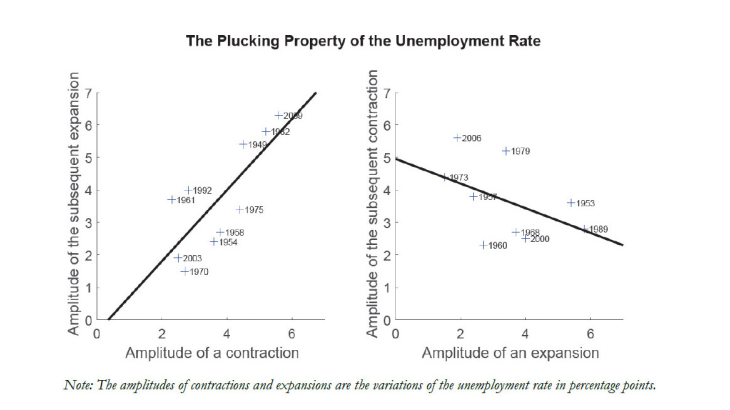Working Paper Series no. 748. In standard models, economic activity fluctuates symmetrically around a ``natural rate'' and stabilization policies can dampen these fluctuations but do not affect the average level of activity. An alternative view–labeled the ``plucking model'' by Milton Friedman–is that economic fluctuations are drops below the economy's full potential ceiling. If this view is correct, stabilization policy, by dampening these fluctuations, can raise the average level of activity. We show that the dynamics of the unemployment rate in the US display a striking asymmetry that strongly favors the plucking model: increases in unemployment are followed by decreases of similar amplitude, while the amplitude of the increase is not related to the amplitude of the previous decrease. We develop a microfounded plucking model of the business cycle. The source of asymmetry in our model is downward nominal wage rigidity, which we embed in an explicit search model of the labor market. Our search framework implies that downward nominal wage rigidity is consistent with optimizing behavior and equilibrium. In our plucking model, stabilization policy lowers average unemployment and thereby yields sizable welfare gains.
Banque de France - Menu Principal
Appuyez sur Entrée pour lancer la recherche
